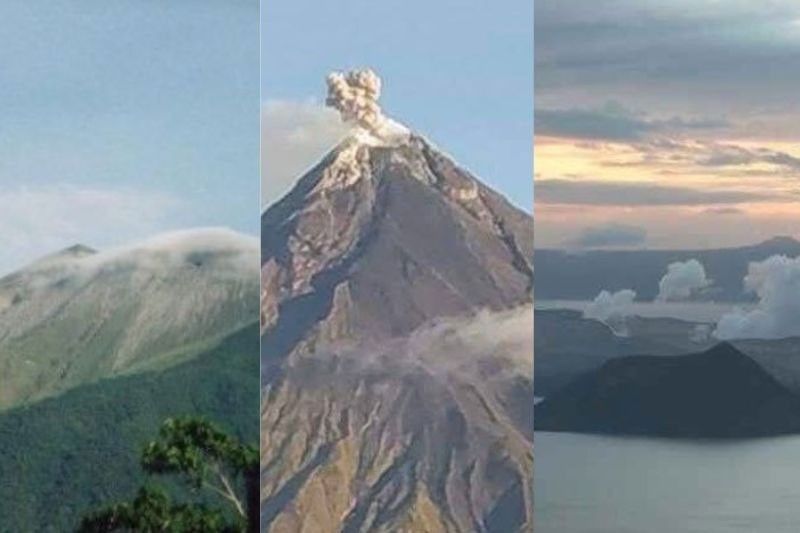74 rockfall events recorded in Mayon

MANILA, Philippines — A major eruption of Mayon Volcano remains a remote scenario for now, but it is showing increased volcanic activity, the Philippine Institute of Volcanology and Seismology (Phivolcs) said yesterday.
Phivolcs resident volcanologist Paul Alanis said there could be either a quiet or a major eruption following the recent activity in the volcano.
The first possible scenario could be a quiet eruption similar to the one in 2014 where there was rockfall and minor lava flow.
“Second scenario is that Mayon Volcano could just be taking its time and it’s possible that like in 2018, there could be a strong eruption and lava flow,” he said in mixed English and Filipino over Unang Balita.
The Phivolcs official said they are monitoring pressure concentrated near the crater of the volcano, adding there were 74 rockfall events recorded in the past 24 hours.
Still, he said a major eruption is still remote and that minor explosions could follow the volcanic activity. These events lasted one to four minutes and emplaced lava debris, with thin ash drifting to the southwest. There has been continuous moderate degassing from the summit crater that produced steam-laden plumes, while sulfur dioxide emission was measured at an average of 208 tons/day on Monday.
Alanis advised the public to strictly comply with the entry prohibitions into the six kilometer-radius Permanent Danger Zone (PDZ) in case of sudden explosions, rockfalls and landslides.
Phivolcs said Alert Level 2 or increased unrest prevails over Mayon, meaning phreatic eruptions or hazardous magmatic eruptions could be possible.
Meanwhile, Phivolcs is also monitoring the increased activity in Taal volcano, recording one volcanic tremor since the morning of June 2.
Taal also produced a sulfur dioxide flux of 9391 tons per day on June 5 and there has been pronounced upwelling of hot volcanic fluids in the main crater lake.
Vog was observed and plumes of up to 1,800 meters tall were also monitored. Taal volcano remains on Alert Level 1 or low-level unrest.
Pulmonologist Dr. Maricar Limpin has advised residents living near Taal volcano to stay indoors and continue wearing face masks to avoid getting sick.
“Sulfur dioxide is irritating to the respiratory system. Those with asthma and chronic obstructive pulmonary disease (COPD) may experience asthma and COPD attacks because of this. Even those with heart ailments may have difficulty in breathing,” said Limpin, director of Action on Smoking and Health Philippines.
Limpin said affected residents should evacuate or, if not possible, should avoid going outside. “The children may inhale sulfur dioxide that can lead to swelling of the lungs. This is detrimental to a child,” Limpin warned. “Pregnant women with asthma should also be careful since they could have asthma attack and this will lead to lower oxygen level that will have a negative impact on the baby.”
Phivolcs yesterday reported that Taal volcano has been emitting more sulfur dioxide, from around 5,000 tons earlier, to over 9,000 tons. Repeated exposure to sulfur dioxide is toxic for humans, and can lead to severe respiratory distress, especially among the vulnerable population.
Monitoring
The Office of Civil Defense (OCD) assured the public yesterday that it is closely monitoring the situation of the country’s volcanoes in coordination with the Phivolcs.
Assistant Secretary Raffy Alejandro, OCD spokesman, said the National Disaster Risk Reduction Management Council (NDRRMC) is prepared for any emergency following reports that Mayon and Taal volcanoes are acting up.
“We have instructed our regional civil defense offices and regional DRRM councils to ensure that all preparations are in place in case a repeat of the previous volcanic episodes happen,” he said.
“This is standard procedure for the OCD as we continue to ensure that local governments are onboard and ready for any contingency,” OCD chief Ariel Nepomuceno said.
“Though there is no imminent threat of a major eruption coming from Taal and Mayon, as seen in the latest bulletins of Phivolcs, our mandate to proactively prepare for these possible hazards dictates that preparations continue to prevent casualties and other damages,” he added.
No-fly zone
The Civil Aviation Authority of the Philippines (CAAP) has updated its Notices to Airmen (NOTAM) yesterday, informing and alerting aircraft of the current alert levels and associated risks amid the ongoing unrest of Taal, Mayon and Kanlaon volcanoes.
CAAP spokesman Eric Apolonio said Kanlaon volcano is currently on Alert Level 1, indicating an abnormal condition.
Under NOTAM B1957/23, flight operators are strongly advised to avoid flying in close proximity to the volcano’s summit due to the possibility of steam-driven or phreatic eruptions. Additionally, entry within Kanlaon’s 4km permanent danger zone has been prohibited.
- Latest
- Trending





























